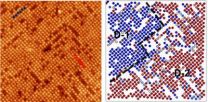(Press-News.org) Citing many sobering examples of how wildlife loss leads to conflict among people around the world, a new article co-authored by Wildlife Conservation Society (WCS) Health & Ecosystems: Analysis of Linkages (HEAL) Program Director Dr. Christopher Golden, calls for an interdisciplinary approach to tackle global biodiversity decline.
The harvest of wild animals directly supports about 15% of the world's people and provides protein for more than a billion of the world's poor. It should come as no surprise that today's unprecedented loss of wildlife, is bringing with it severe repercussions in terms of conflict and human tragedy around the world.
The article, led by Justin Brashares of UC Berkeley and involving a team of sociologists and ecologists, offers three examples in which declines can be linked to conflict;
1) Altered economic structure leading to exploitative labor practices. Wildlife declines can bring about a need for more labor to collect scarcer resources. The authors discuss examples of trafficking of children and adults to undertake forced labor under abusive, and sometimes deadly, circumstances.
2) The rise of profiteering groups that use violence to control wildlife resources. Guerilla groups and militarized crime syndicates are drawn to huge profits gained through the trafficking of illicit wildlife items. Terrorist groups such as the Lord's Resistance Army and Janjaweed are poaching ivory tusks from elephants and rhino horn to fund their activities.
3) Vigilante resource management that escalates into conflict. In circumstances where government lacks the will or capacity to protect declining wildlife resources, vigilante movements may arise. Such was the case when Somalis set out to defend their exclusive fishing rights. Ultimately, these movements evolved into more violent forms and gave way to today's pirate activity.
"Unsustainable human exploitation of wildlife populations does not have singular effects on ecological integritry, but rather has far-reaching consequences that lead to the instability of our health, livelihoods and national security," said Chris Golden.
The authors believe that approaches based on a single discipline, such as law enforcement, will not tackle the myriad challenges of defaunation (loss of wildlife due to human pressures) and its impacts. Such approaches, they say, target outcomes rather than understanding the underlying factors driving demand for wildlife. Instead, the authors argue that an integration of disciplines that combines understanding in ecological, social, economic, political, and other issues is needed.
"Wildlife loss is widely viewed as a symptom of social unrest and injustice; we show with this work that is often the source of these social outcomes. As such, wildlife management should be a central element of efforts to mitigate conflicts as seemingly disparate as child slavery, ivory trafficking, and piracy." said Brashares.
The authors point to climate change policy as a possible model for an integrative approach, pointing out that the Intergovernmental Panel on Climate Change has successfully brought together academia with scientists and policy-makers, and is far-reaching in its influence. The authors say the formation of a similarly and far reaching working group is long overdue for addressing the global decline of wildlife.
INFORMATION:
"Wildlife decline and social conflict," appears in the July 25th issue edition of the magazine Science. Co-authors include: Justin S. Brashares, Briana Abrahms, Kathryn J. Fiorella, Cheryl E. Hojnowski, Ryan M. Marsh, Tristan A. Nunez, Kathrine Seto and Lauren Withey of the University of California, Berkeley; Christopher Golden of the Wildlife Conservation Society and Harvard School of Public Health; and Douglas J. McCauley of the University of California, Santa Barbara.
New study draws links between wildlife loss and social conflicts
Authors say wildlife loss leads to exploitative labor practices, violence, and organized crime
2014-07-24
ELSE PRESS RELEASES FROM THIS DATE:
Hubble finds 3 surprisingly dry exoplanets
2014-07-24
Astronomers using NASA's Hubble Space Telescope have gone looking for water vapor in the atmospheres of three planets orbiting stars similar to the sun -- and have come up nearly dry.
The three planets, known as HD 189733b, HD 209458b, and WASP-12b, are between 60 and 900 light-years away from Earth and were thought to be ideal candidates for detecting water vapor in their atmospheres because of their high temperatures where water turns into a measurable vapor.
These so-called "hot Jupiters" are so close to their star they have temperatures between 1,500 and 4,000 degrees ...
The microbes make the sake brewery
2014-07-24
A sake brewery has its own microbial terroir, meaning the microbial populations found on surfaces in the facility resemble those found in the product, creating the final flavor according to research published ahead of print in the journal Applied and Environmental Microbiology. This is the first time investigators have taken a microbial census of a sake brewery.
Many sake makers inoculate with both bacteria and yeast, says corresponding author David A. Mills of the University of California, Davis, but he and his colleagues investigated a sake brewery where inoculation ...
New imaging agent provides better picture of the gut
2014-07-24
MADISON — A multi-institutional team of researchers has developed a new nanoscale agent for imaging the gastrointestinal (GI) tract. This safe, noninvasive method for assessing the function and properties of the GI tract in real time could lead to better diagnosis and treatment of gut diseases.
Illnesses such as small bowel bacterial overgrowth, irritable bowel syndrome and inflammatory bowel disease all occur in the intestine and can lead to serious side effects in patients with diseases such as diabetes and Parkinson's.
Until now, there hasn't been a good way to ...
Brain's dynamic duel underlies win-win choices
2014-07-24
People choosing between two or more equally positive outcomes experience paradoxical feelings of pleasure and anxiety, feelings associated with activity in different regions of the brain, according to research led by Amitai Shenhav, an associate research scholar at the Princeton Neuroscience Institute at Princeton University.
In one experiment, 42 people rated the desirability of more than 300 products using an auction-like procedure. Then they looked at images of paired products with different or similar values and were asked to choose between them. Their brain activity ...
TGen-led study seeks to understand why some HIV-positive men are more infectious
2014-07-24
FLAGSTAFF, Ariz. — July 24, 2014 — A new study led by the Translational Genomics Research Institute (TGen) provides insights into the interplay among bacteria, viruses and the immune system during HIV infection.
Currently, doctors measure HIV-positive men's infectivity — their potential to infect others — based on their blood viral load. However, some men produce large amounts of virus in their semen despite having low levels in their blood. Researchers call this "compartmentalization," where different levels of the virus can be found in different parts of the body; in ...
Parched West is using up underground water, UCI, NASA find
2014-07-24
Irvine, Calif., July 24, 2014 — A new study by University of California, Irvine and NASA scientists finds more than 75 percent of the water loss in the drought-stricken Colorado River Basin since late 2004 came from underground resources. The extent of groundwater loss may pose a greater threat to the water supply of the western United States than previously thought.
This study is the first to quantify the amount that groundwater contributes to the water needs of western states. According to the U.S. Bureau of Reclamation, the federal water management agency, the basin ...
ORNL study reveals new characteristics of complex oxide surfaces
2014-07-24
OAK RIDGE, Tenn., July 24, 2014 -- A novel combination of microscopy and data processing has given researchers at the Department of Energy's Oak Ridge National Laboratory an unprecedented look at the surface of a material known for its unusual physical and electrochemical properties.
The research team led by ORNL's Zheng Gai examined how oxygen affects the surface of a perovskite manganite, a complex material that exhibits dramatic magnetic and electronic behavior. The new avenue to understand surface behavior could benefit researchers who are interested in using a wide ...
Earlier Stone Age artifacts found in Northern Cape of South Africa
2014-07-24
Excavations at an archaeological site at Kathu in the Northern Cape province of South Africa have produced tens of thousands of Earlier Stone Age artifacts, including hand axes and other tools. These discoveries were made by archaeologists from the University of Cape Town (UCT), South Africa and the University of Toronto (U of T), in collaboration with the McGregor Museum in Kimberley, South Africa.
The archaeologists' research on the Kathu Townlands site, one of the richest early prehistoric archaeological sites in South Africa, was published in the journal, PLOS ONE, ...
BU researchers discover that Klotho is neuroprotective against Alzheimer's disease
2014-07-24
(Boston)—Boston University School of Medicine researchers may have found a way to delay or even prevent Alzheimer's disease (AD). They discovered that pre-treatment of neurons with the anti-aging protein Klotho can prevent neuron death in the presence of the toxic amyloid protein and glutamate. These findings currently appear in the Journal of Biological Chemistry.
Alzheimer's disease is the most frequent age-related dementia affecting 5.4 million Americans including 13 percent of people age 65 and older and more than 40 percent of people over the age of 85. In AD the ...
Creating sustainable STEM teacher preparation programs
2014-07-24
A new study has identified two factors that characterize sustainable university and college programs designed to increase the production of highly qualified physics teachers. Specifically, one or more faculty members who choose to champion physics teacher education in combination with institutional motivation and commitment can ensure that such initiatives remain viable. Science, Technology, Engineering and Math (STEM) teacher shortages are especially acute in physics, and the study points the way for institutions seeking to increase the number of STEM graduates prepared ...
LAST 30 PRESS RELEASES:
Women with heart disease are less likely to receive life-saving drugs than men
How electric vehicle drivers can escape range anxiety
How do birds flock? Researchers do the math to reveal previously unknown aerodynamic phenomenon
Experts call for global genetic warning system to combat the next pandemic and antimicrobial resistance
Genetic variations may predispose people to Parkinson’s disease following long-term pesticide exposure, study finds
Deer are expanding north, and that’s not good for caribou
Puzzling link between depression and cardiovascular disease explained at last: they partly develop from the same gene module
Synthetic droplets cause a stir in the primordial soup
Future parents more likely to get RSV vaccine when pregnant if aware that RSV can be a serious illness in infants
Microbiota enterotoxigenic Bacteroides fragilis-secreted BFT-1 promotes breast cancer cell stemness and chemoresistance through its functional receptor NOD1
The Lundquist Institute receives $2.6 million grant from U.S. Army Medical Research Acquisition Activity to develop wearable biosensors
Understanding the cellular mechanisms of obesity-induced inflammation and metabolic dysfunction
Study highlights increased risk of second cancers among breast cancer survivors
International DNA Day launch for Hong Kong’s Moonshot for Biology
New scientific resources map food components to improve human and environmental health
Mass General Brigham research identifies pitfalls and opportunities for generative artificial intelligence in patient messaging systems
Opioids during pregnancy not linked to substantially increased risk of psychiatric disorders in children
Universities and schools urged to ban alcohol industry-backed health advice
From Uber ratings to credit scores: What’s lost in a society that counts and sorts everything?
Political ‘color’ affects pollution control spending in the US
Managing meandering waterways in a changing world
Expert sounds alarm as mosquito-borne diseases becoming a global phenomenon in a warmer more populated world
Climate change is multiplying the threat caused by antimicrobial resistance
UK/German study - COVID-19 vaccine effectiveness and fewer common side-effects most important factors in whether adults choose to get vaccinated
New ultraviolet light air disinfection technology could help protect against healthcare infections and even the next pandemic
Major genetic meta-analysis reveals how antibiotic resistance in babies varies according to mode of birth, prematurity, and where they live
Q&A: How TikTok’s ‘black box’ algorithm and design shape user behavior
American Academy of Arts and Sciences elects three NYU faculty as 2024 fellows
A closed-loop drug-delivery system could improve chemotherapy
MIT scientists tune the entanglement structure in an array of qubits
[Press-News.org] New study draws links between wildlife loss and social conflictsAuthors say wildlife loss leads to exploitative labor practices, violence, and organized crime



